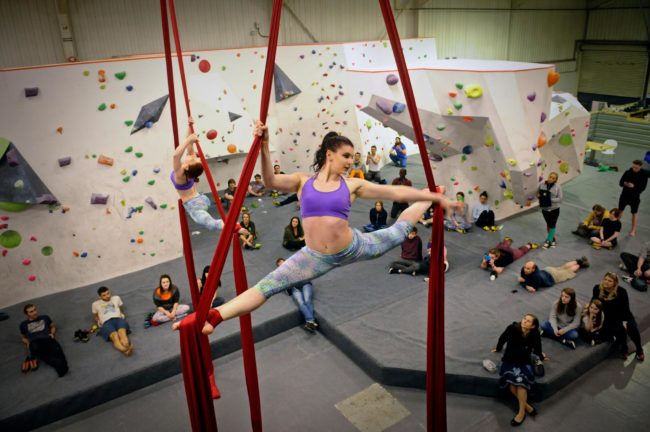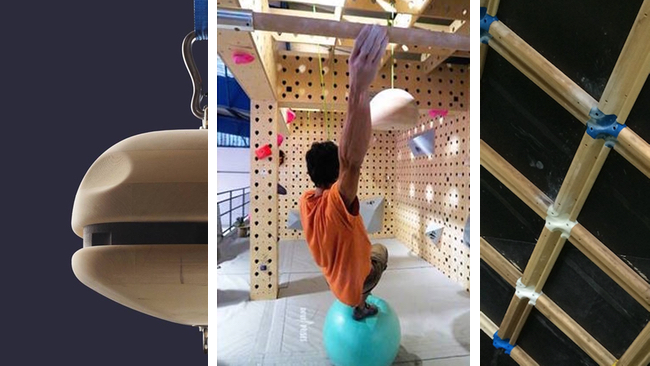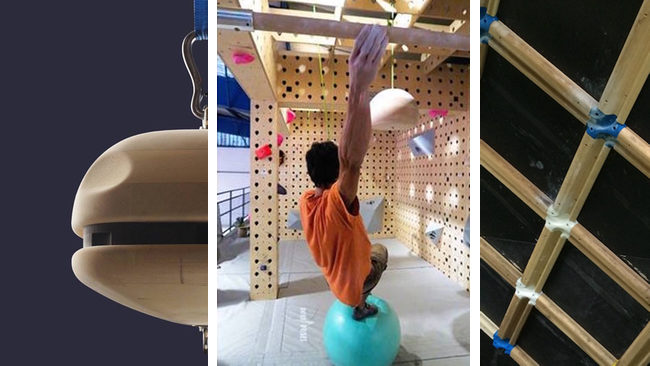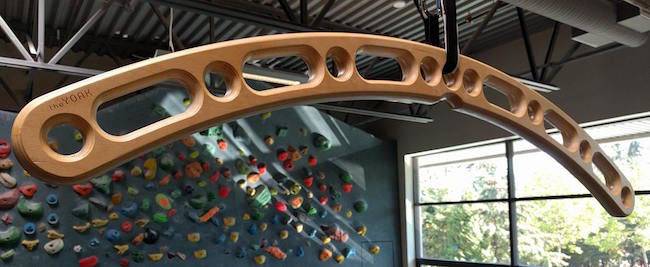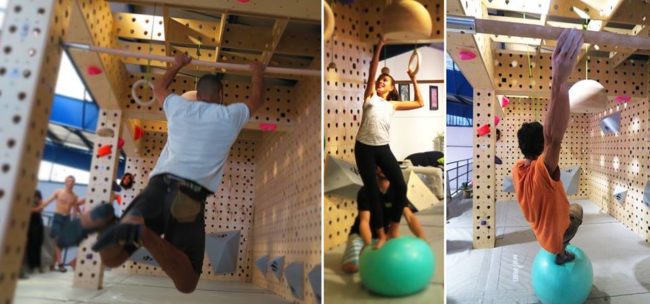
By Matt Whittaker
For the indoor climbing gym industry, growth isn’t coming without pain. That wouldn’t be a surprise to adventurer Erik Weihenmayer, the first blind person to climb Mount Everest, who told attendees of the 11th Climbing Wall Summit in Loveland, Colo., last week that there are more struggles on adventures than triumphs.
But it’s those struggles that can animate the process of growth, which isn’t a steady line upwards but more like the way a volcano spews lava, he said during his keynote speech.
“What if adversity weren’t the enemy, but the pathway to greatness?” he told attendees of the annual conference.
As more people use indoor climbing gyms, the industry is facing some growing pains such regulatory hurdles. But the market is not yet saturated, and there are still revenue streams out there from relatively untapped markets such as high school climbing teams, aspiring speed climbers and those interested in top notch routesetting.
These and others are some of the topics discussed at this year’s summit, which drew 672 attendees. The conference was put on by the Climbing Wall Association industry group and held last week in Loveland, Colorado.
Gym management software company Rock Gym Pro’s founder Andy Laakmann estimates that the climbing gym industry in the United States and Canada will bring in $400 million to $500 million in revenues this year, and says a lot of the industry’s growth is coming from multi-gym chains expanding into new areas.
Regulatory issues
One of the more popular sessions at the summit featured a presentation on the trials of business regulation in the state of Ohio. Though they were challenged, climbing gyms saw a victory at the end of 2016 over the state’s attempts to regulate them like amusement parks. The new legislation won by the industry offers guidelines to gyms in other states that may face similar attempts in the future.
Through a 1.5-year and roughly $30,000 process involving a lobbyist and lawyer, the gyms were able to get the state legislature to create a law saying that climbing gyms aren’t regulated as amusement rides. The law regulates climbing gyms directly and affords them an enhanced level of liability protection if they meet all of the responsibilities listed.
“Basically, our waiver is written into state law,” said Matt Roberts, owner of the Kernmantle group, an agricultural risk management consulting company. He is also partner with Vertical Adventures, an Ohio climbing gym company.
It’s impossible to say what the costs of regulation as amusement parks could have been, he said. But depending on how regulators defined a ride, it could have been steep, he says. The state inspection fee is $400 per ride each year. For climbing gyms, would rides be defined as per rope, per wall or per gym?
The state also mandates that there be one operator per ride that is 16 years old or older, so how would that work out in terms of how many extra belayers would be required for youth teams?
And then there were questions from regulators more used to inspecting amusement park rides than climbing gyms, such as “How many holds do you torque test each morning,” he said.
Roberts said the inspectors never asked about ropes or harnesses.
Roberts told CBJ after his presentation that climbing walls in other states will likely face similar attempts at regulatory overreach. “It’s reasonable to say any state that hasn’t had it will have it,” Roberts said. “The only way this won’t be tested in nearly every state is if the industry dies off.”
Over the next decade, “this is going to happen more and more often,” said Bill Zimmerman, chief executive officer of the CWA.
Opportunities for new business
Conference participants also heard about potential new avenues to boost their gyms’ membership and revenues.
There is a market out there to attract high school students by creating school teams that are different from competitive climbing teams, says Andy Miers, the high school team coordinator at Adventure Rock, a climbing gym company in Wisconsin.
Since beginning in 2009, the company has grown the number of high school team members to around 400, boosting overall membership perhaps by 15 percent, he told CBJ.
When they started the program, they weren’t looking for strong climbers, he told the audience. They were primarily looking to grow gym customers by capturing a new demographic. “We’re not trying to find climbers,” he said. “We’re trying to create climbers.” The teams are generally started by students and maintained by faculty leaders, he said.
His company has attracted students with free promotional events using portable climbing walls as well as free days at Adventure Rock. Special belay tags with school mascots on them have become popular.
Aside from increasing a gym’s membership base, advantages to wooing high schoolers include boosting company awareness in the community and helping with hiring, as some of the climbers eventually want to work for Adventure Rock, he said.

Speed climbing
Last year, after two years of work by the International Federation of Sport Climbing (IFSC), the International Olympic Committee tapped climbing as an official sport for the 2020 Tokyo Summer Olympics in a combined format including bouldering, sport climbing and speed climbing. Not surprisingly, the Olympics were a highly discussed topic among attendees.
This new format pushes speed climbing and the walls on which it’s performed to the forefront for gym operators and designers.
Speed climbing was the “lynchpin” of getting climbing admitted as an Olympic sport, Alicia Green, marketing and creative director with Aerial Adventure Tech, told an audience at the summit.
“It’s the easiest climbing discipline to understand from the non-climbing community,” she said. “The combined format, even though it may not be everybody’s favorite, it was a necessity for getting in the Tokyo games.”
If the combined format of bouldering, sport climbing and speed climbing remains in the Olympics, speed climbing’s inclusion will likely boost the popularity of this niche of the sport, she said.
“It’s a growing trend,” she said. “You’re going to want to have a speed wall to meet that demand. It’s a big deal for gyms as you consider what to add.”
She pointed to Cliff Hangers, a climbing gym company in North Carolina that is now a destination location because of its 15-meter speed wall. People wanting to train for competition travel there, she said. “If you have that, you will bring athletes to your location,” she said.
The increase in popularity of speed climbing and a decision by the IFSC to switch to auto belay systems from human belayers created a business opportunity for Aerial Adventure Tech. The company is the exclusive global distributor for C-3 Manufacturing’s Perfect Descent Climbing Systems, which were selected as the auto belays for world record speed events after the IFSC announced it would require the use of auto belay systems in all speed world record events.
The move to auto belay systems for official events mean there are more regulations, such as a standard for how much upward pull there can be on a climber, eliminating variances between belayers, Green said. Also, the switch will eliminate the human-powered top rope set up that generated heat problems and rope wear. “We’ve moved away from human belayers,” She said.
Later, in an interview with CBJ, she said speed climbing has been slow in catching on in the United States compared with other places abroad because there is so much of a bigger emphasis on bouldering competitions.




